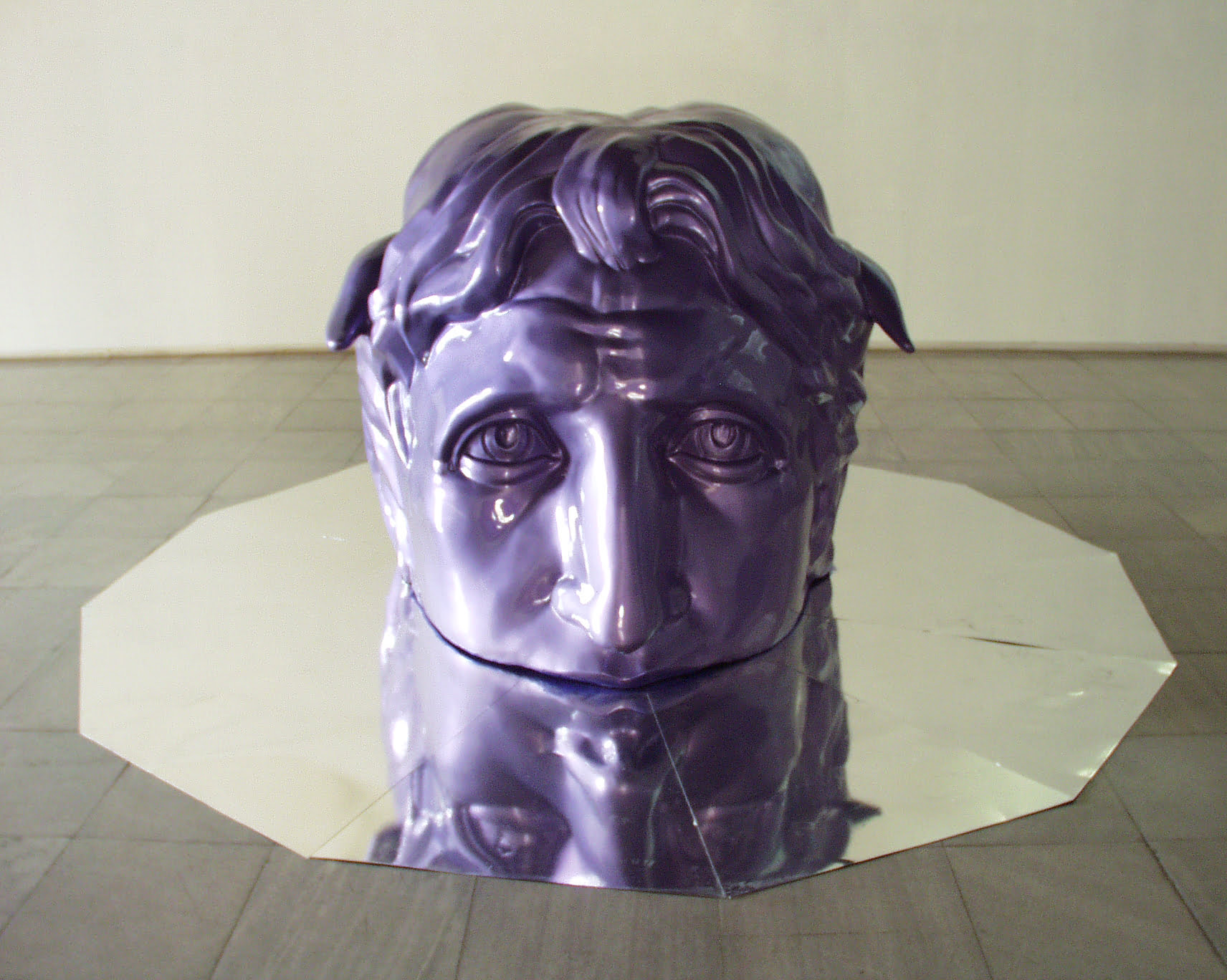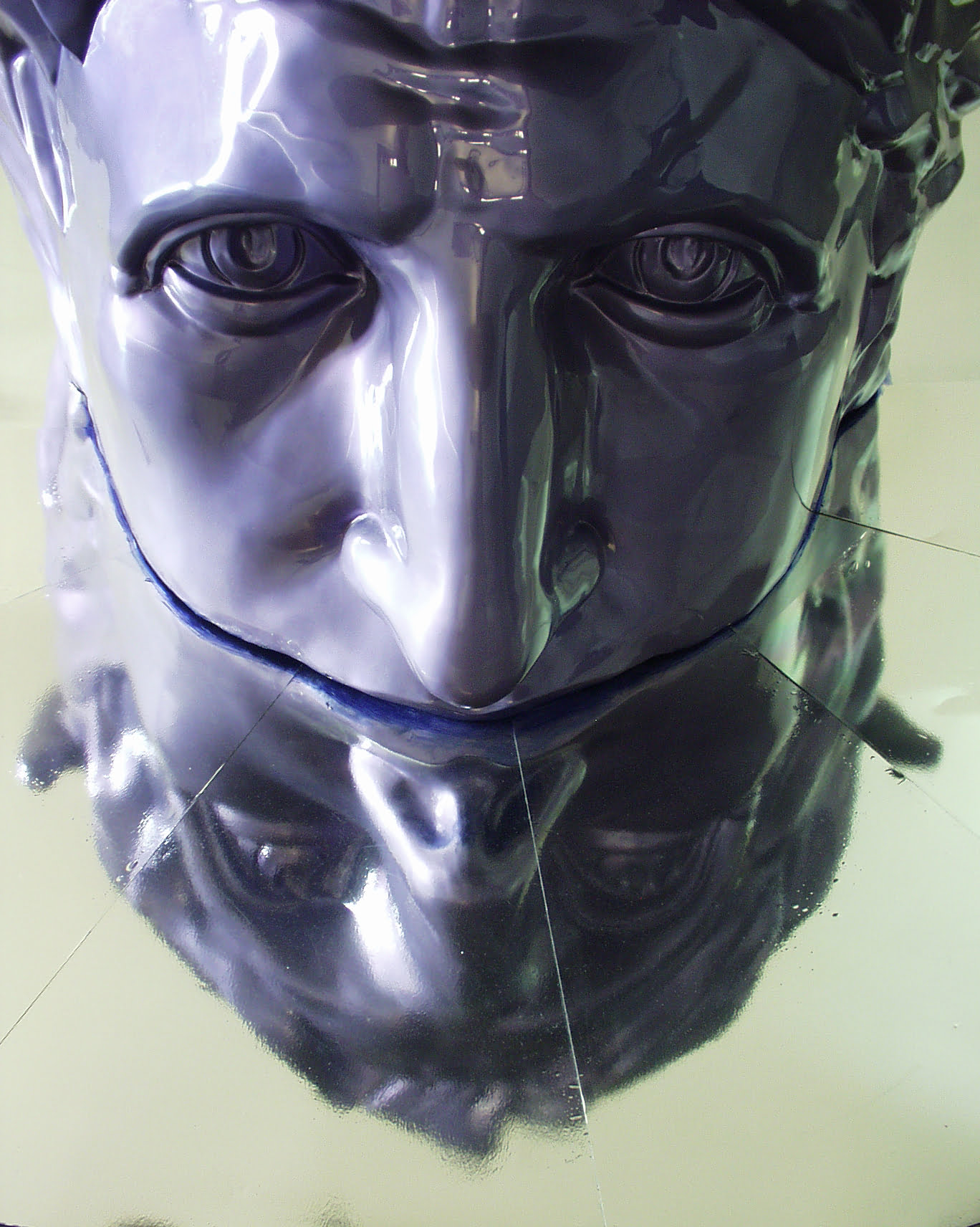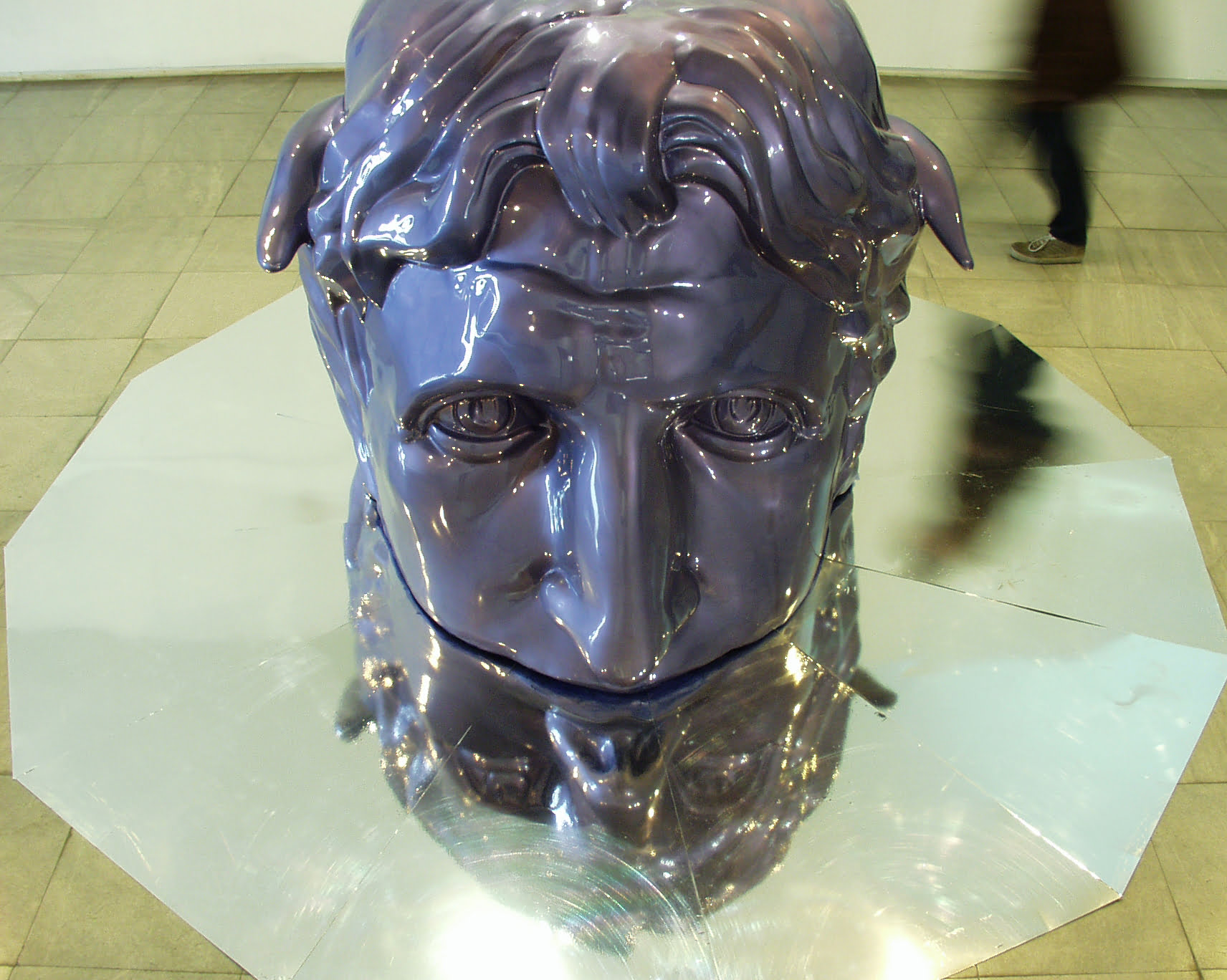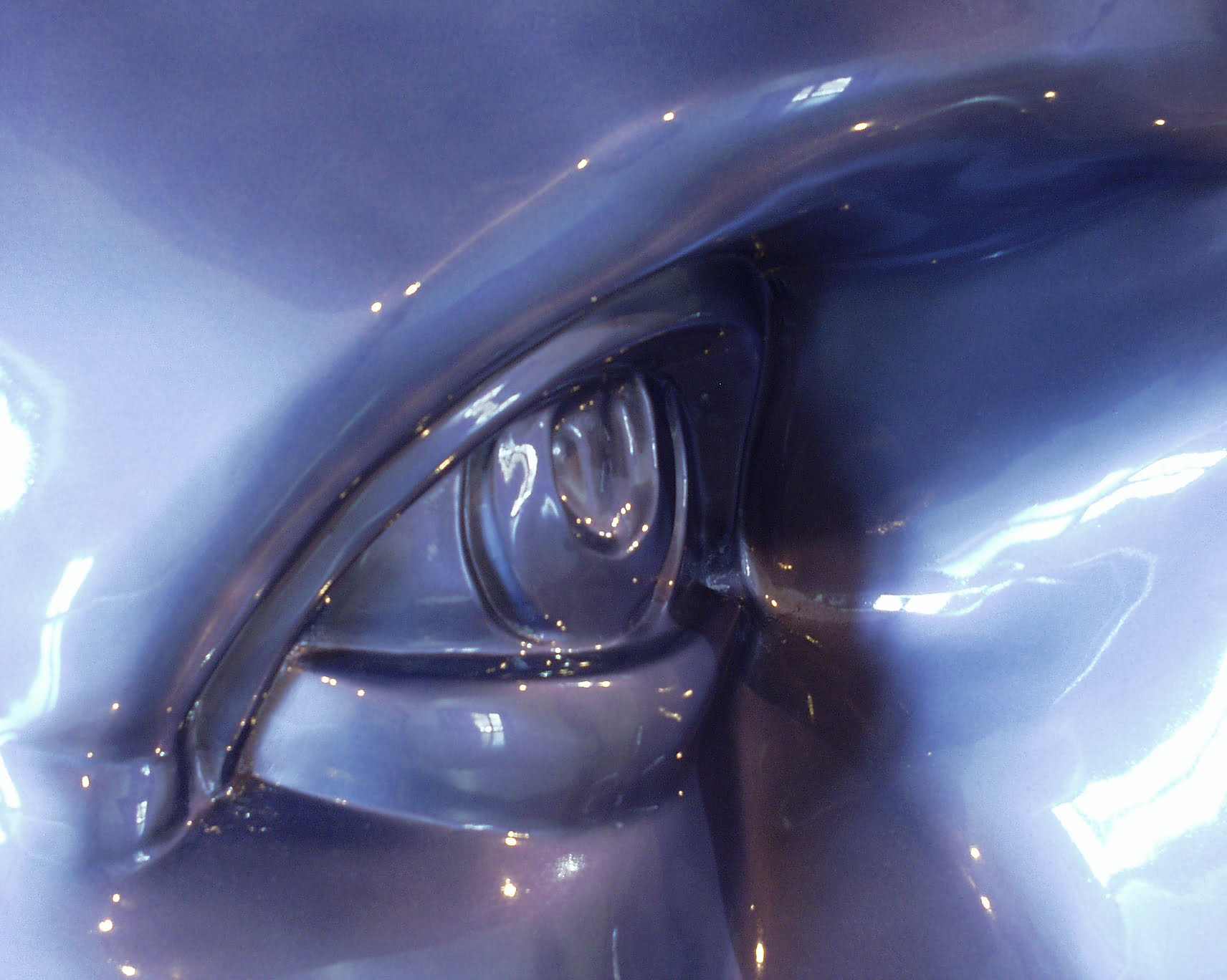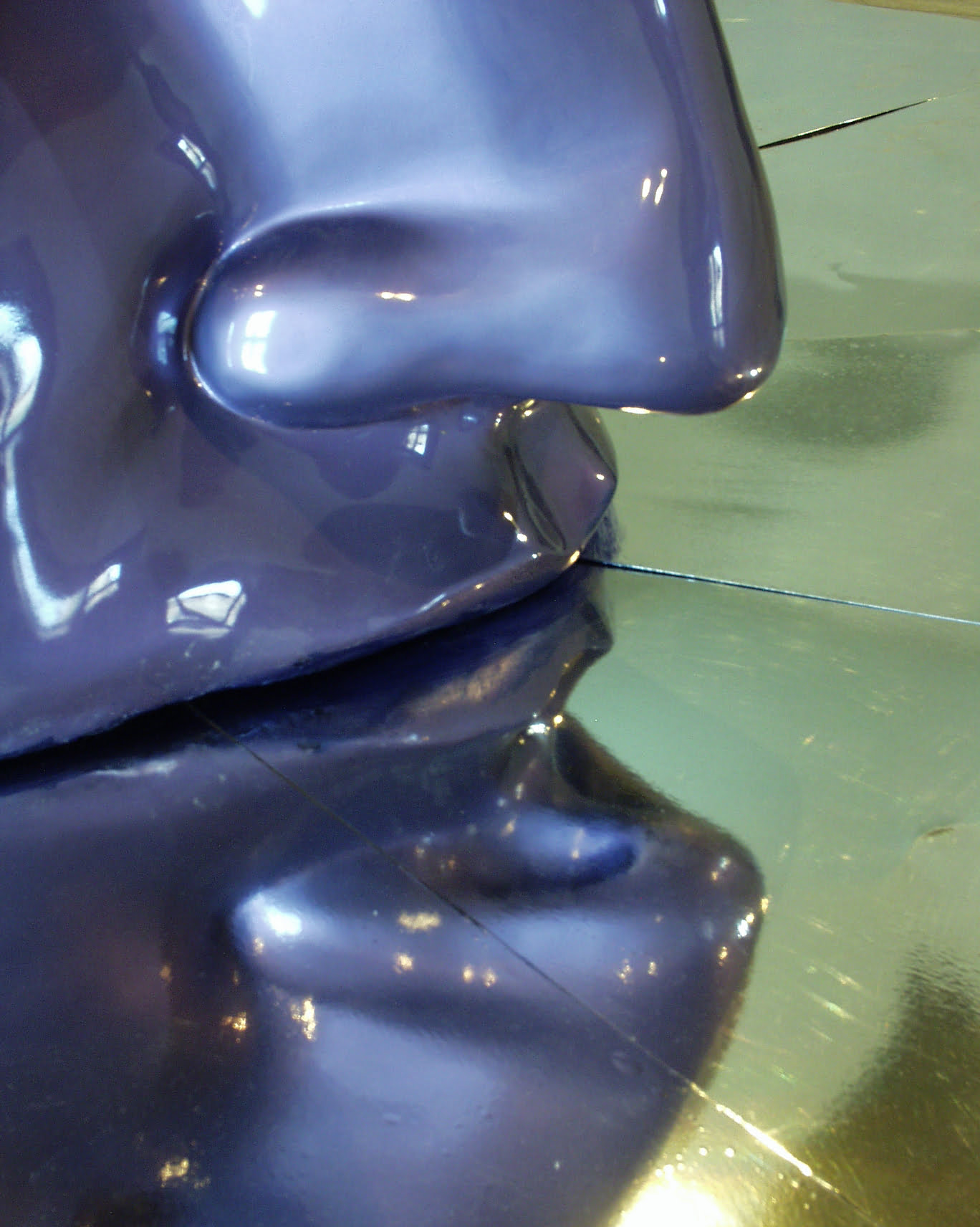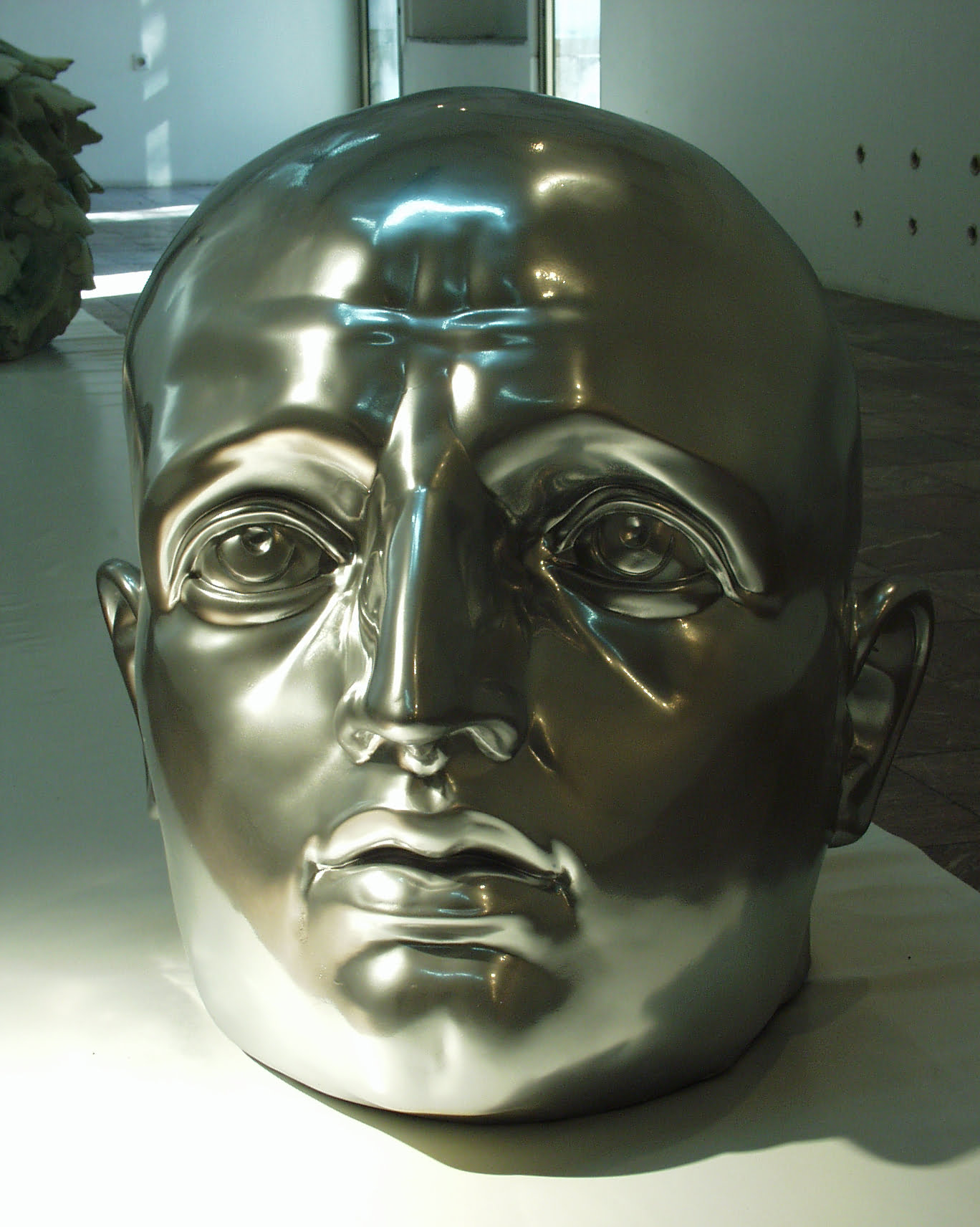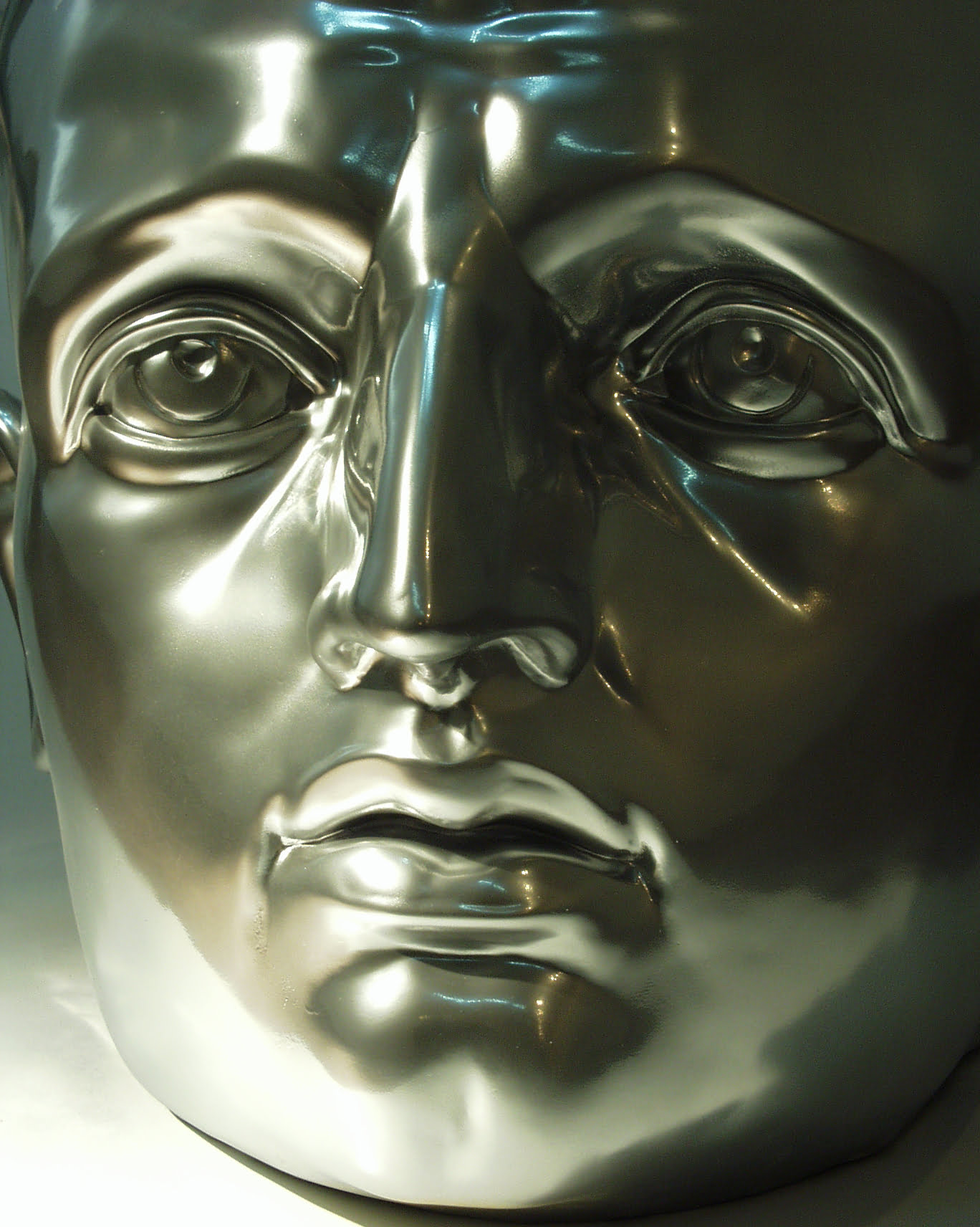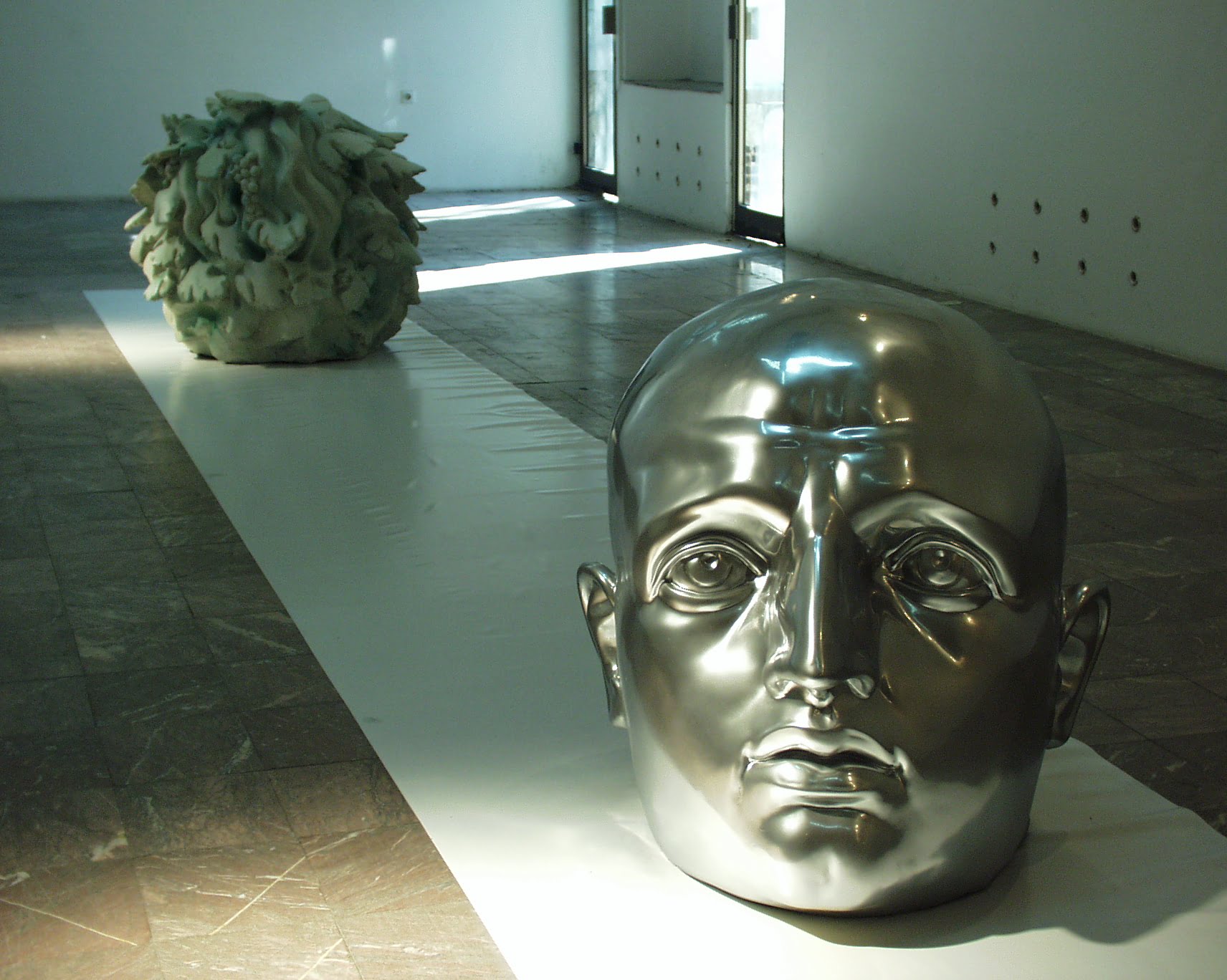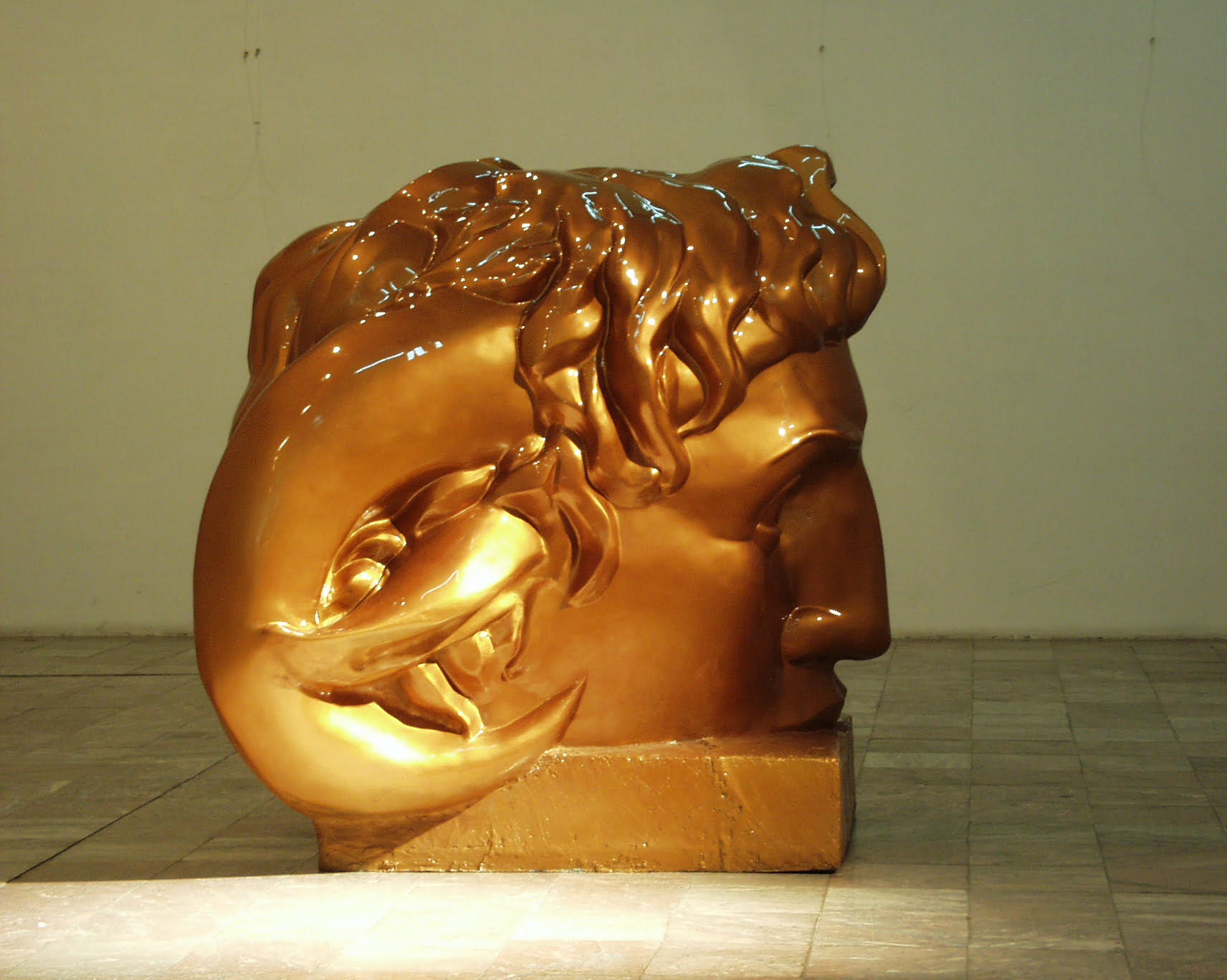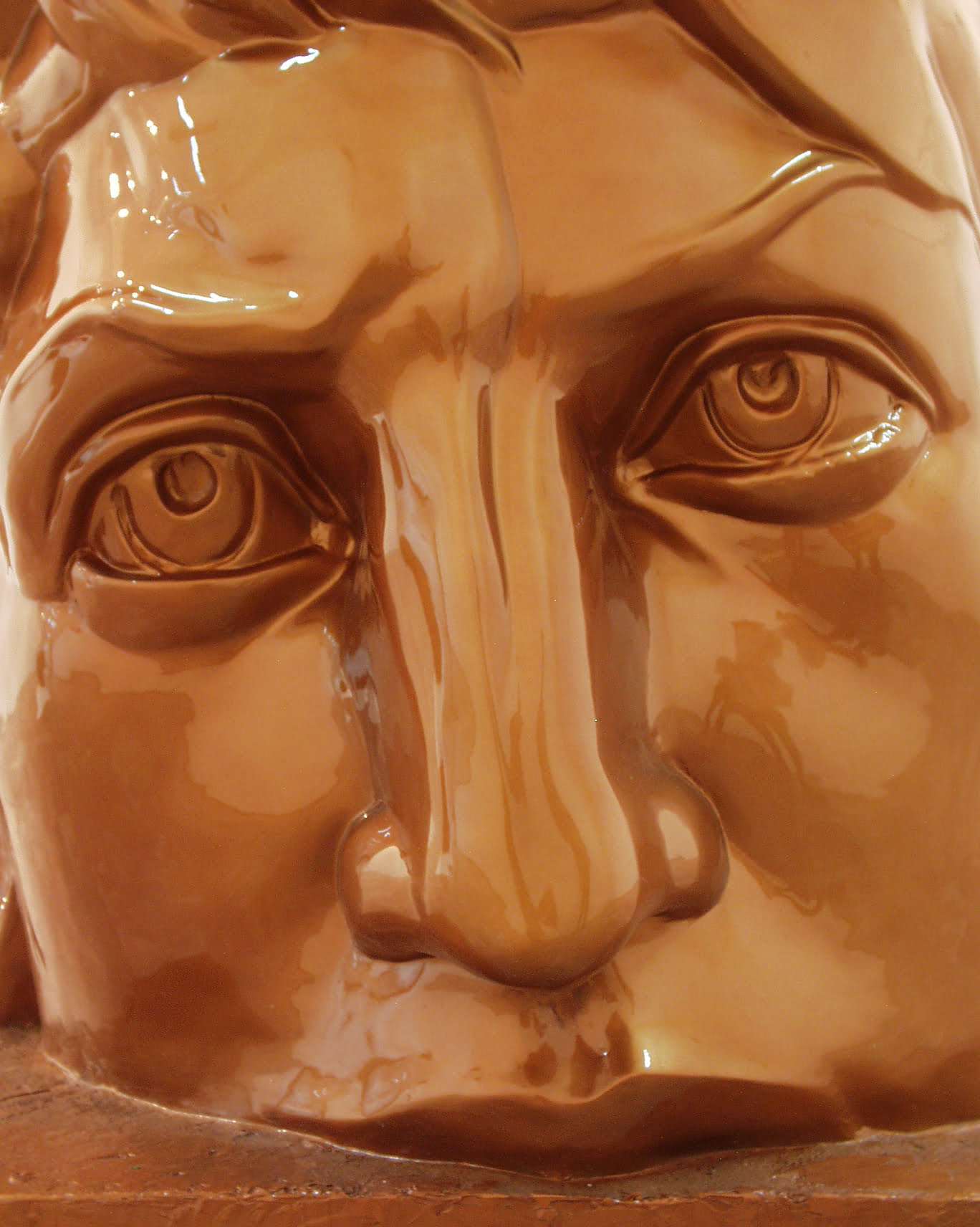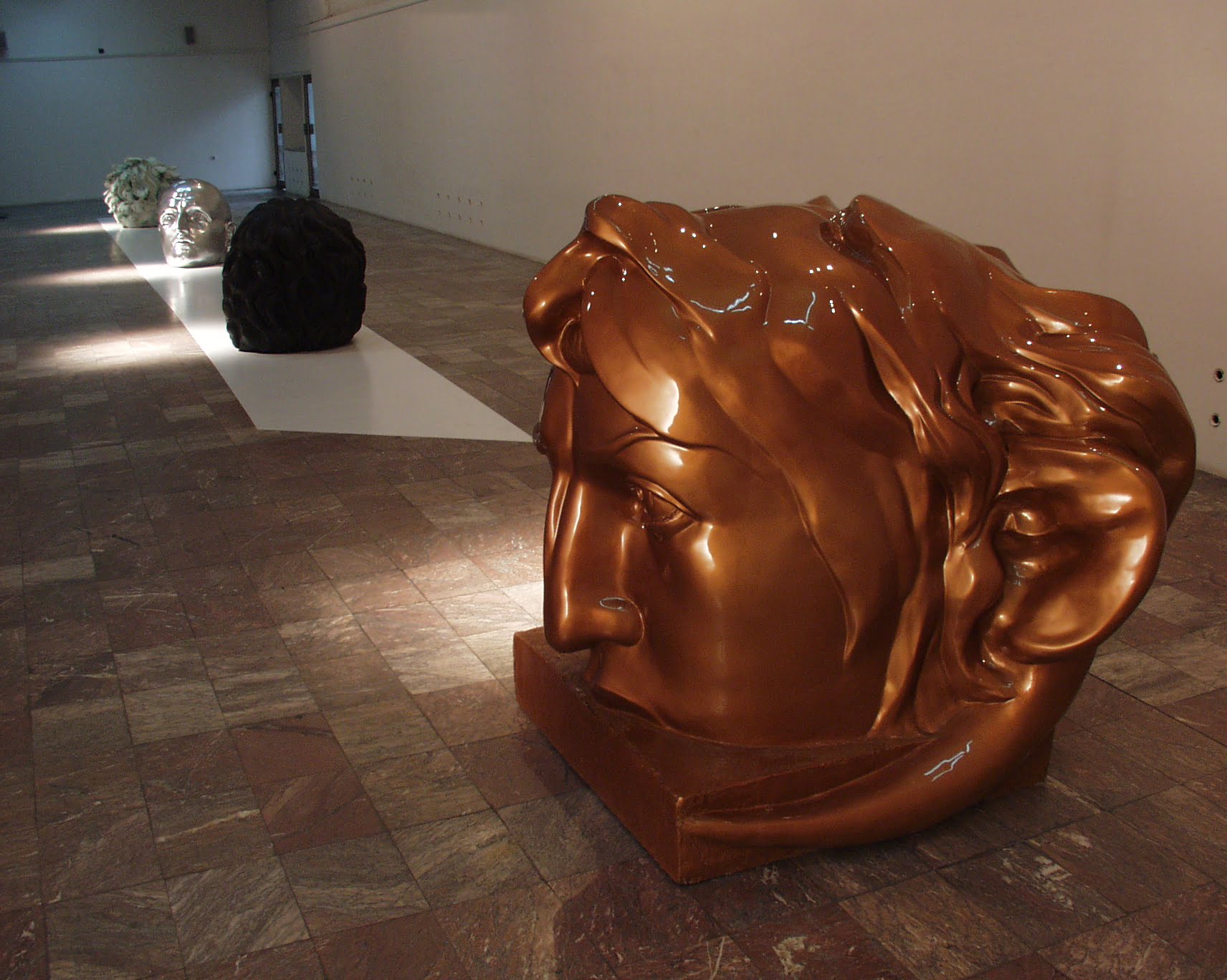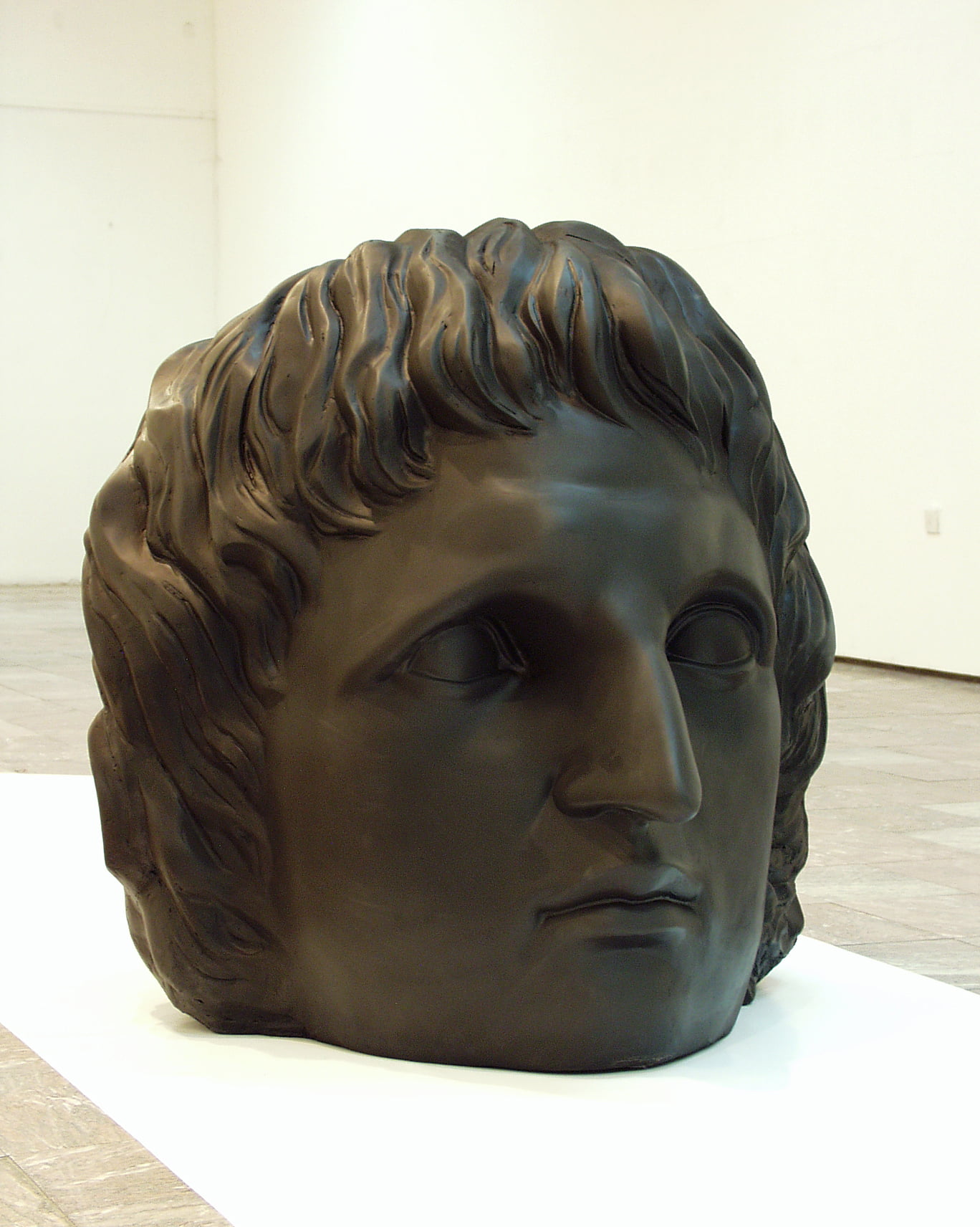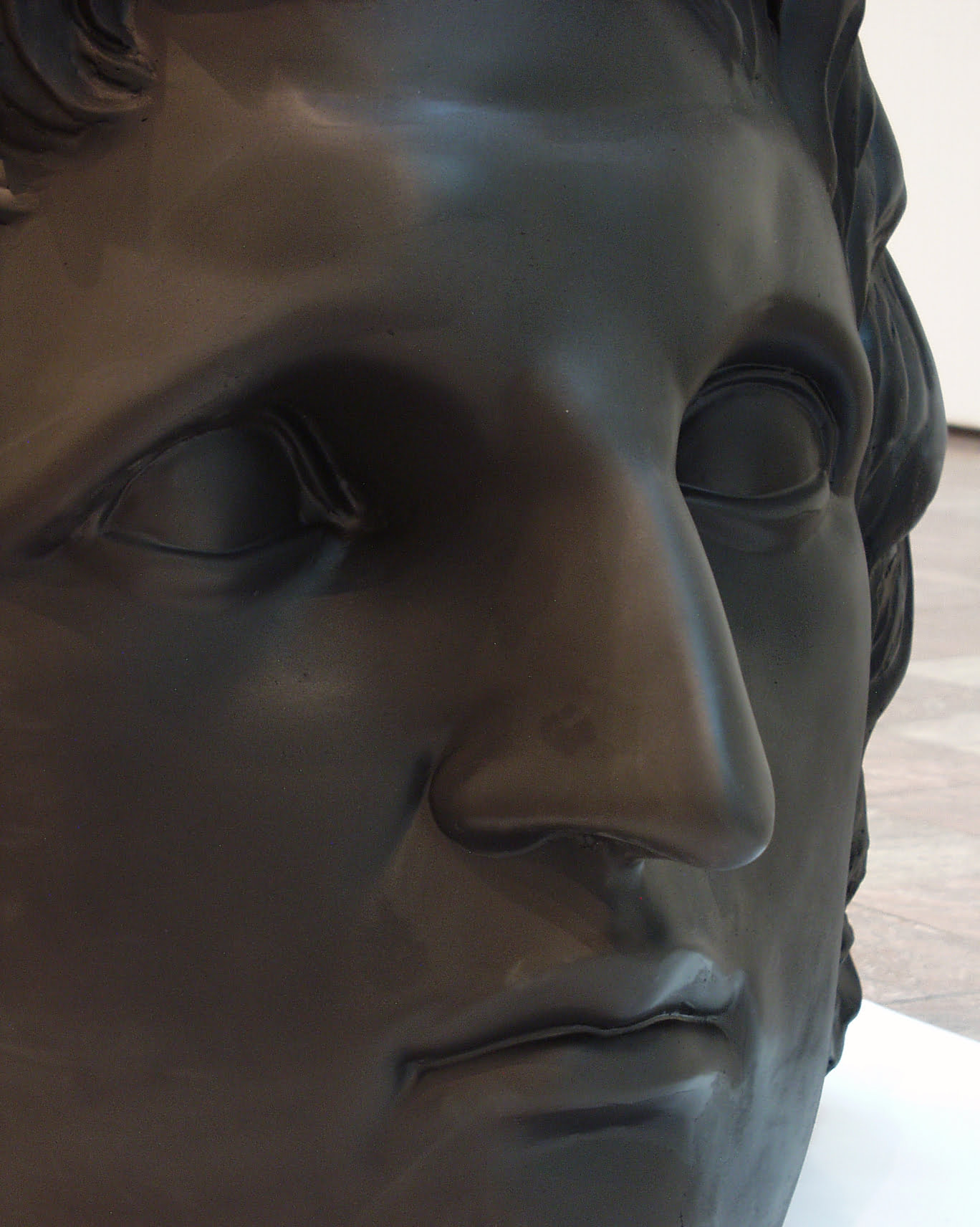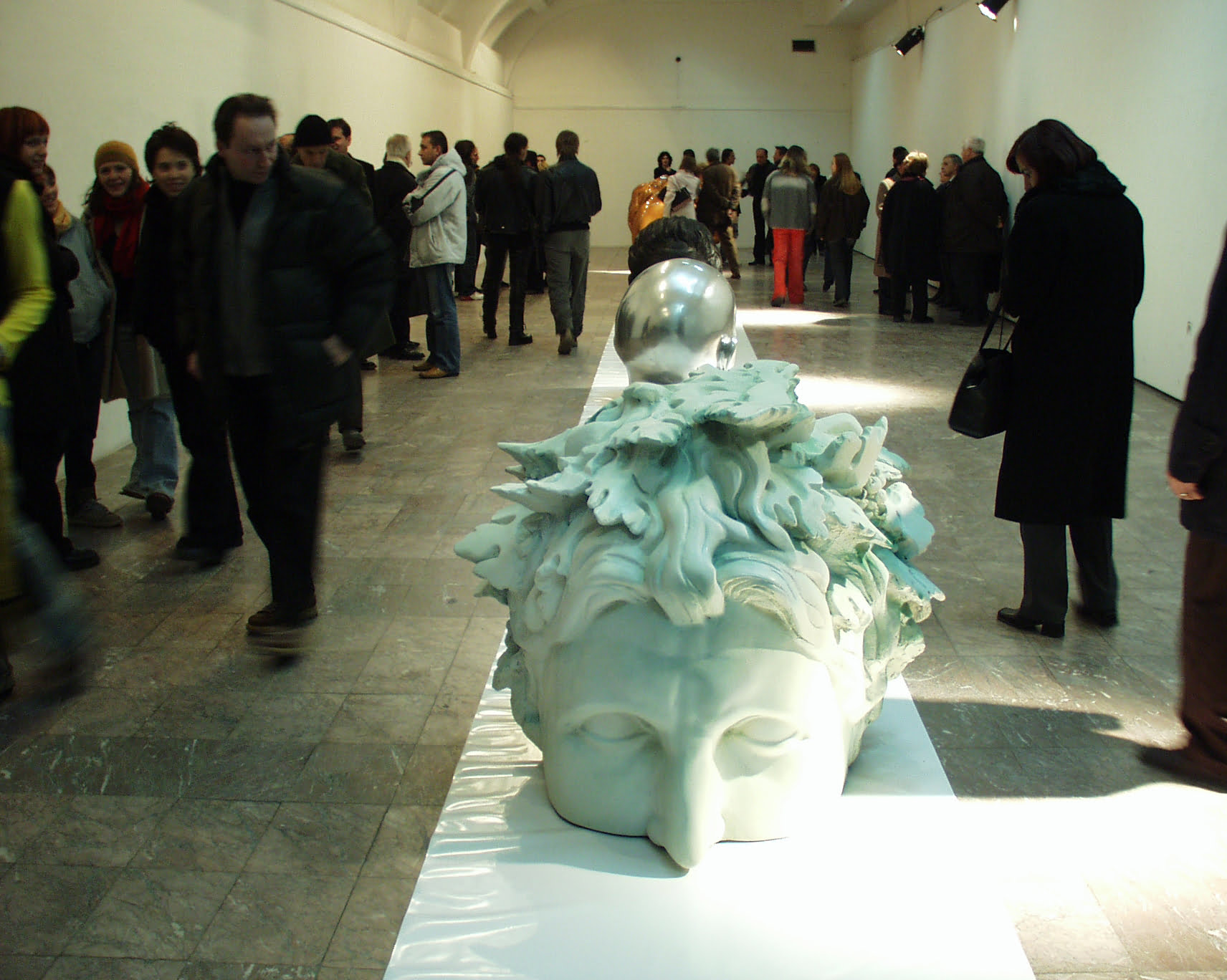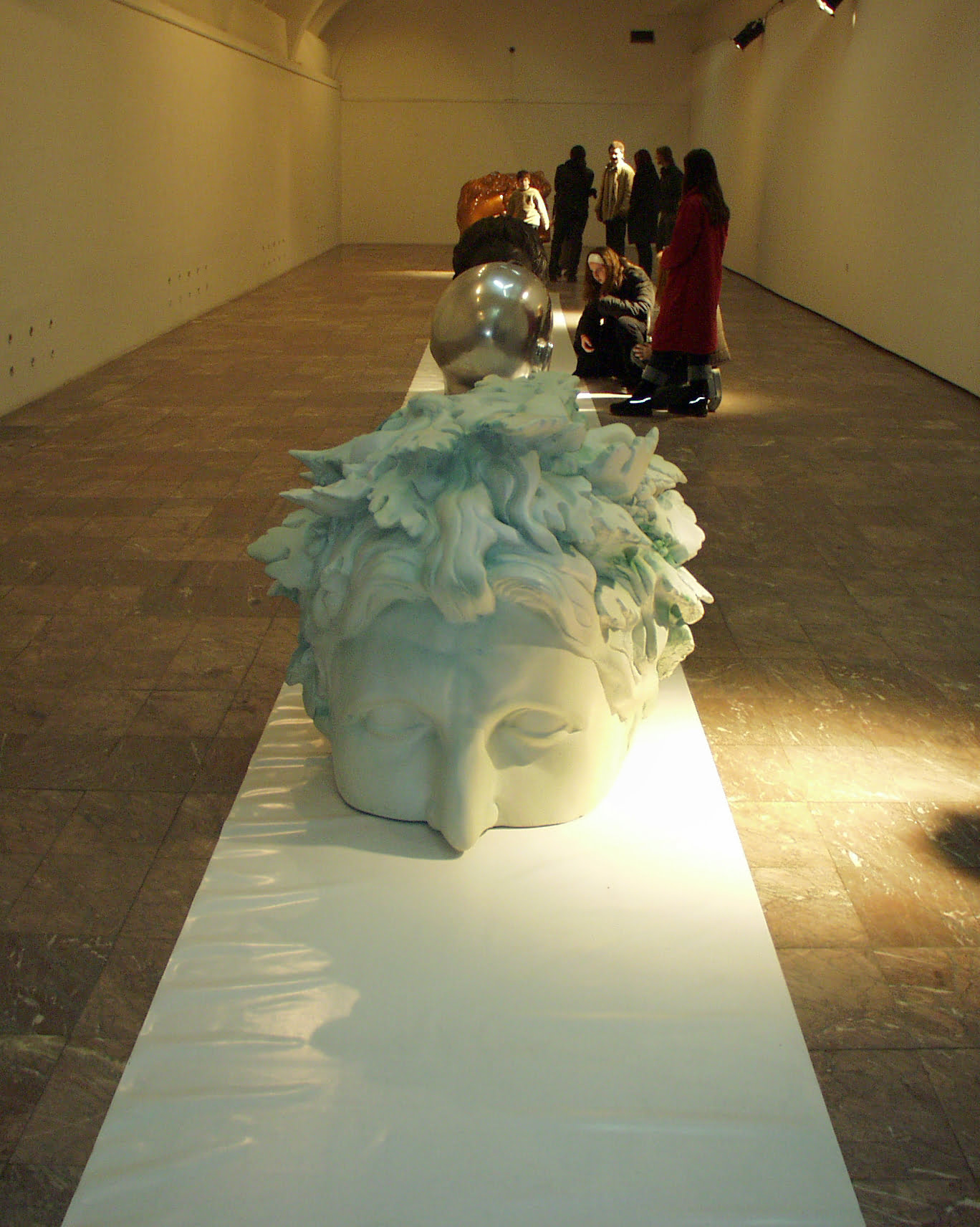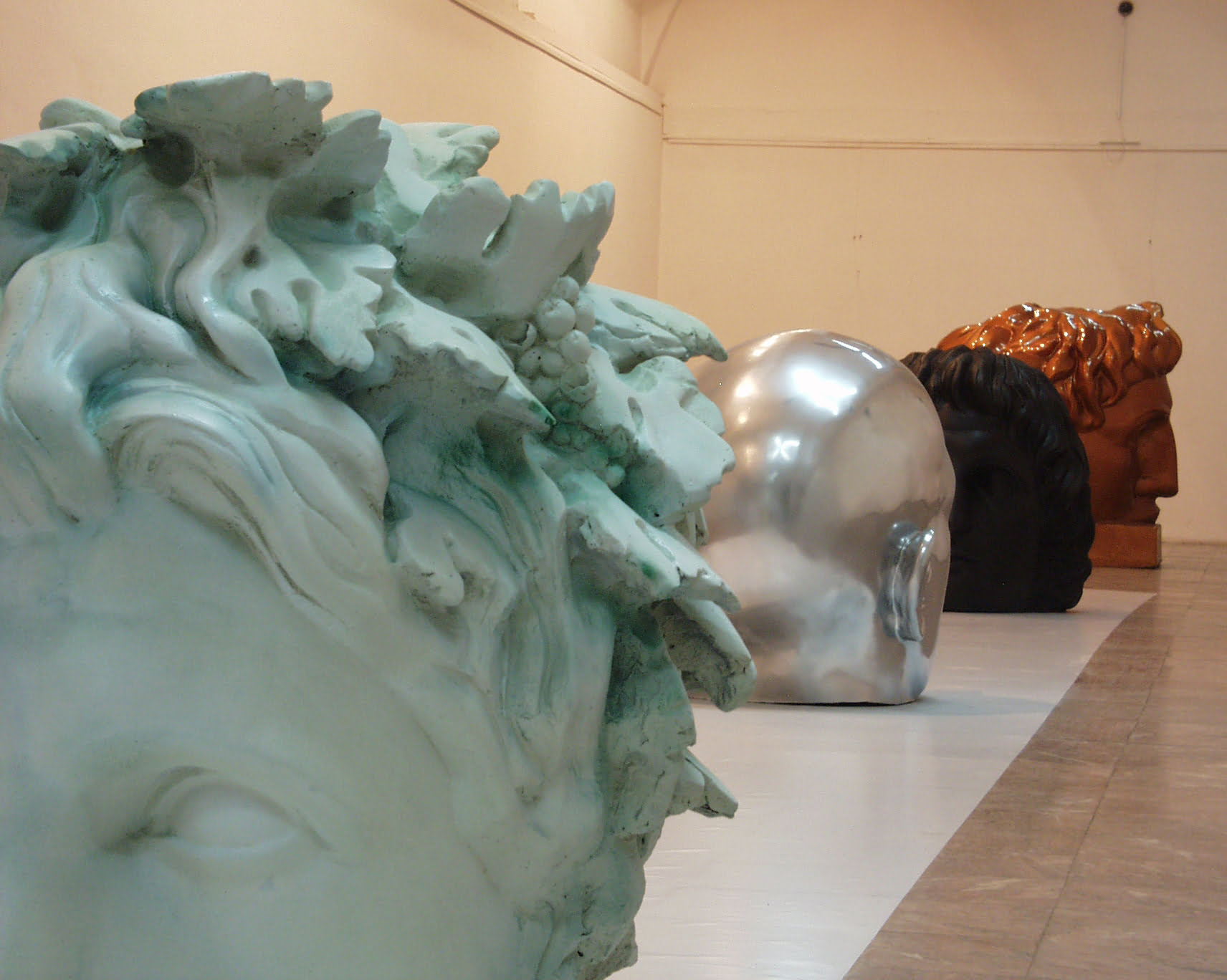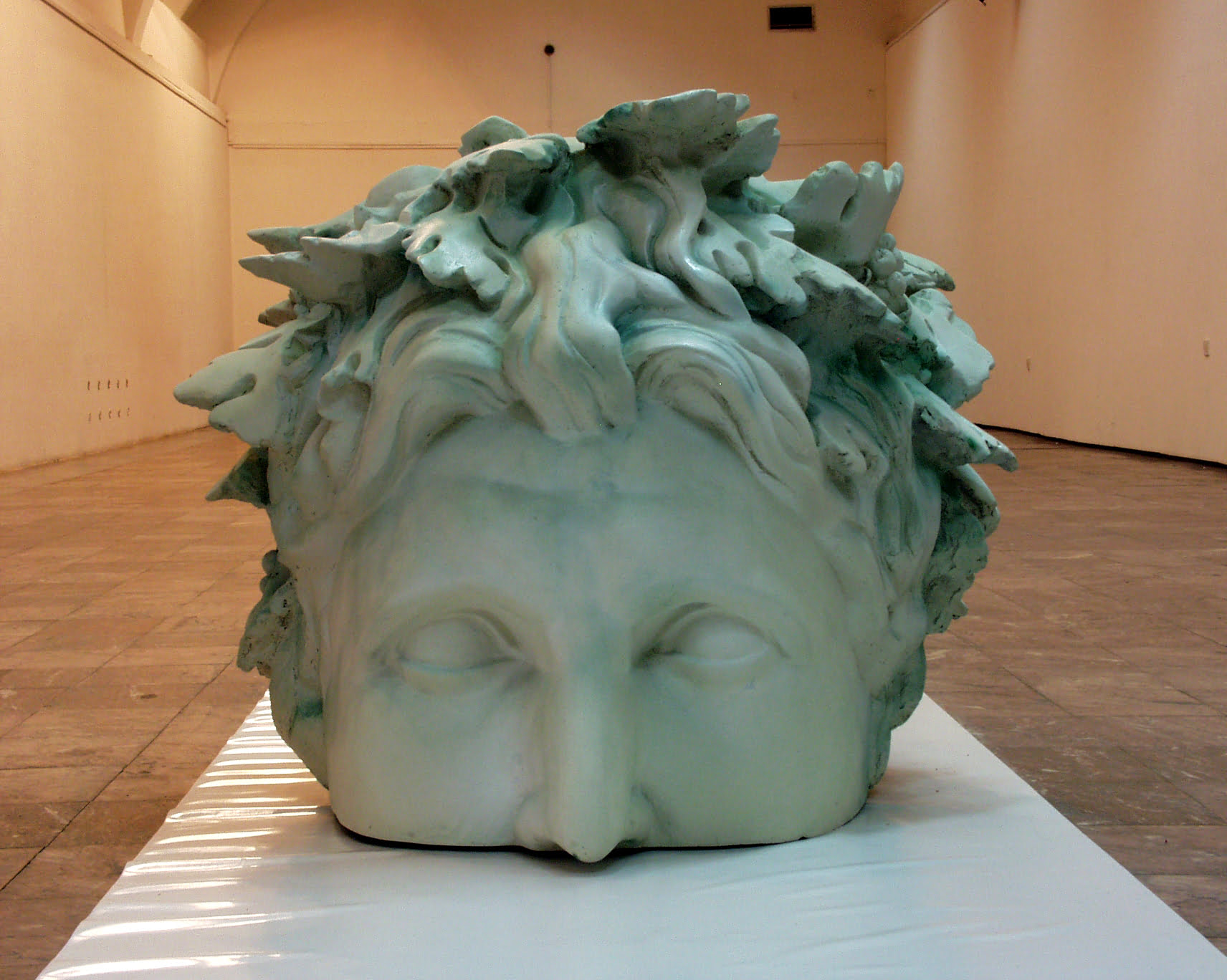REFLECTION AS A DYNAMIC CONNECTION OF THE PAST AND PRESENT
The sculpture usually separates the space to the one conquered by it, and belongs to its volume (the material, dimensions, form and treatment), and the rest is the remaining space around it. The space of the sculpture-portrait is also captured within the limits and determination of the narrative space regarding the personality which represents it.
The latest five sculptures of Zarko Basheski, placed as a sculpture installation in two different environments, surpass that ordinary intercourse between the sculpture and the physical / narrative space in several different ways, and above all it achieves that effect by the specific use of reflection. A round mirror is placed in the basis of the largest sculpture / object (enlarged in proportion, which is 5-7 times bigger than the real dimensions of a human face). The surface of the sculpture is so well treated that it looks as a mirror itself, thus the reflection establishes a dynamic relationship among the sculptures, the space and the spectator, and it seems that the boundary between the sculpture and the remaining space starts fading away.
With the use of polyester and other contemporary materials, as well as different latest technological processes of sculpture surface treatment and additional light, the author focuses on the reflecting sculpture and by that makes an attempt to redefine the portrait from a classical sculpture genre into a complex facial machinery ( A thousand plateaus, Deluze and Guattari). The face/portrait is no longer an exclusive bearer of the natural characteristics of that individual, but simultaneously represents a mirror surface in which each individual – spectator can see himself/herself, and it relates to the contemporary society as well. Thus, the identification related to subject /object expands and becomes determinated by the social-cultural sphere. Basheski emphasizes the connection of contemporary processes regarding multiplication by similar processes which were well known even in Ancient times – and it is not a coincidence that one of the main inspirations of the author are the antique statures and various sculpture representations that multiplied and disturbed the stylized character of the famous army leader.
Therefore, the sculpture installation of Basheski demonstrates that the singularity of Alexander the Great’s character and personality has been multiplied in five sculpture variants, which has been done by the use of different coloration, iconography and attributes, as well as by the use of various technologies and treatment procedures. In that manner the character/portrait transforms from a simple sign into a narrative chain of markers, where the marked one has been emptied and ready to acquire new meaning.
This process of reducing inherited associations and opening the space towards new interpretations is most radically presented in the mirror sculpture-portrait. It is completely liberated from all kinds of attributes, and it does not only make possible for us to fully identify ourselves with the ancient conqueror, but it enables us to interpret his character in concordance to all history information and legends related to his personality. The well known and most often used attributes are sometimes replaced with the ambivalent sex markers, thus one of the portrait sculptures is intentionally divided into a male and female profile, which are subtly joined by the vertical line. Accordingly, the complex human nature and inner restlessness of Alexander the Great are even more accented. In that manner, the fact that the rest of the sculptures more or less have smooth and reflecting surface as well, serves to emphasize the contemporary understanding of the cultural determination regarding the difference in sexes.
The technological procedure itself, taken from the automobile industry, speaks of the modern production and culture context, but the sculpture fragmenting besides being a prolongation of Basheski’ previous interest for making a simulation of an archeological site (the exhibition Sculpture – Temple, 1998, The Museum of Contemporary Art), it also speaks of one complex attitude towards contemporary times.
The past and the present intermingle because of the complex rhetoric’s whether there is a possibility at all to show one personality through a portrait. In the theory of ruins, so much favored in the 18th century, stood our awareness of the sublime and unreachable characteristics of nature and architecture, the sculptures of Zarko Basheski include in that list of impossible presentations the one of the human character. Each portrait is always previously sentenced to a partial representation of the bearer character. Therefore, the sculpture space of Zarko Basheski transform into an abyss, in which the offered fragmented portraits from a distant past can always be complemented with more new fragments out of the present reflections-portraits regarding the contemporary spectators.
Suzana Milevska
THE MACEDONIAN AND THE FIRST PERSON PLURAL
Imagine a fascination in dimension compared to the things that it addresses: about the seed – as much as one kernel of love, about the water –rain drops gathered in whirlpools under your foot, about the land – a clump of thirsty Macedonian earth, pressed tight in your pocket while traveling along the seas in search of your fortune as migration workers and because of the vassal compulsion. Now, imagine a sculptor, imagine a Macedonian sculptor, imagine Zarko Basheski in the early years of his sudden discovery regarding the gigantomachia of his own Macedonian origin! The retold enthusiasm towards the softened sculpture of Roden has been surpassed and already faded away, or the admiration towards the technical devices of Alexander Calder, Or the infinite interpretation of Henry Moor’s wit, while the geometric austere of the sculpture through the project of abstraction more and more resembles a design that without the meta-language of the critic has no admission to the reality of life. Therefore, naturally, Basheski returns to his own roots just in time. He cannot be satisfied with the popular and established beginnings, crystalized by Dimo Todorovski, Anastas Dudulov or Vladimir Ginovski. He goes beyond the XXth and XIXth century, beyond the isihaism, beyond idolatry, he breaks down the boundaries of the VIth century and gets to the monumental immortality of the sculpture in relation to the Macedonian – Lisip, Hares, Polidor, Atendor, Dejnokrat, Sostrat. I would like to pay attention to the following advice: if you want to go back from 2004, on the path looking for the ancient root of Macedonian art, there is only one way: follow Alexander III the Great. Follow his loud eagerness in everyday life, follow his image in the Macedonian folklore, follow the world’s bestseller “Alexander” which has been an obligatory inspirational bedtime story from the XIX century and going back to the IInd century, a story that we all grow up with. Whatever was pressed back in the iceberg of our Neolithic memory because of projected compulsion and refuge, now creeps through the sculptures of Zarko Basheski.
Craftsmanship and art is a translation coming from the authors infinity, it is a Crystallization transported in the recognizable three dimensional world of our senses out from the exciting intermingling of the multidimensional space of our personal experience. The artist’s courage (which makes him different from others) is made of his virtue to share his experiences with his people. The artist’s virtue (it defines him as a creator) is in his greatness to reflect the moment of a civilization peak in his people’s culture. The artist’s value (it places him in the pyramid of the greatest) is in the perfection of his tongue that in accordance and with respect towards the tradition adds one more verse in the immortal singing of his civilization.
Today we enjoy the moment of the tectonic movement of the ice that has covered the presence of Alexander III the Great for decades in the reality and everyday life of his fatherland.
We are witnesses of one creative effort of the sculptor Zarko Basheski, who was incited by the sculpture perfection of the Macedonians, originating 2000 years ago, he synthesized the narrative, the symbolism and polychromic of the Macedonian fine arts fits in the ancient immortality of the Macedonian singing through the millenniums, adding the verse and the song as an anticipated and foretold discovery long expected into the precise System of natural elements regarding the Macedonian civilization.
The character of Alexander III the Great which unstoppably sprouts from this soil, carries on itself, in itself and with itself the mythological roots, those ancient coded records about the creation of conscience regarding this people that persistently dreams of an united world: A WORLD AS A CULTURAL COMPETITION, a world that the Great Neolithic Mother succeeded to build, a world of 3,5 million square meters, a world of the economy of peace that lasted for 3000 years and a world that Alexander succeeded to realize once more as his own dream by creating a cultural empire of 3,5 million square meters which lasted only 3 years. Standing tall before these monumental reminiscences coming from our pressed back conscience, contemplating on the dimension that is about to erect before our induced fascination, excited as archeologists which accidentally discovered a grand deposit and are still not ready to face the consequences, leaves you totally alone to deal with the question: Whether the enthusiasm of Zarko Basheski is only a consequence of the meteor cut regarding the creation of Alexander the Great in the world’ history and civilization, whether facing the glory of the Macedonians caused all these occurrences, whether the experienced liberty because of the leap over the black curtain of the so called Slavs from the VIth century caused this postmodern surrealism, or maybe tonight we experience the fascination of the meeting between the Macedonian and his first person plural.
Vangel Bozinoski
